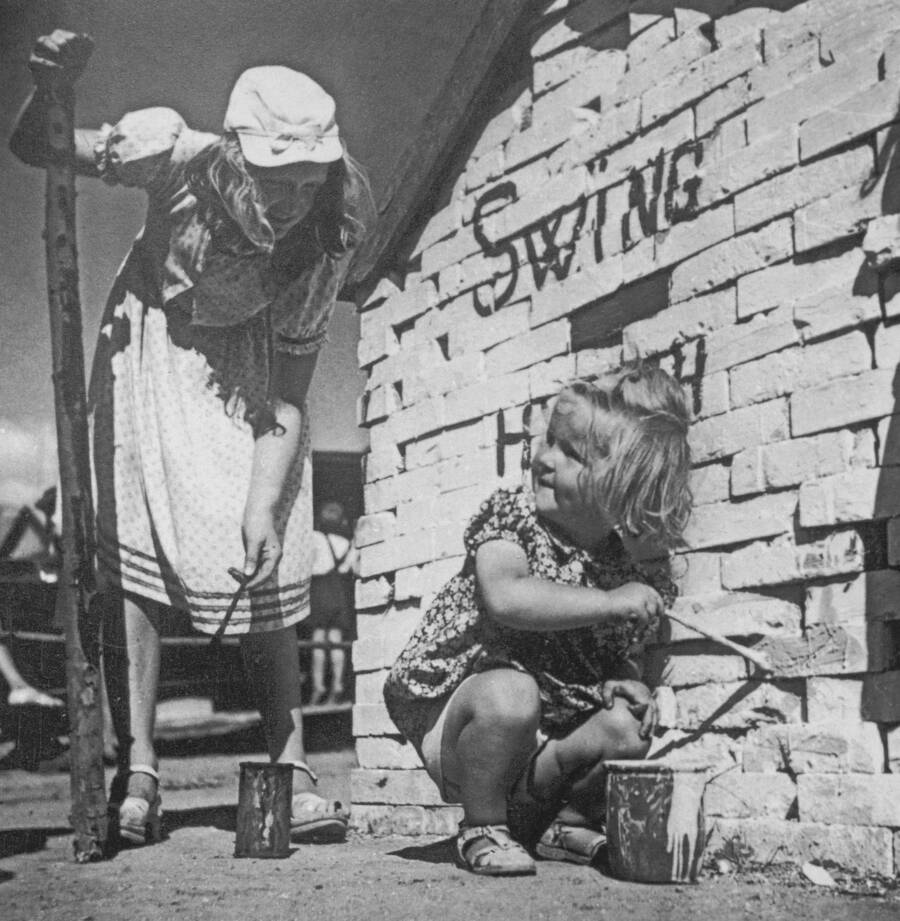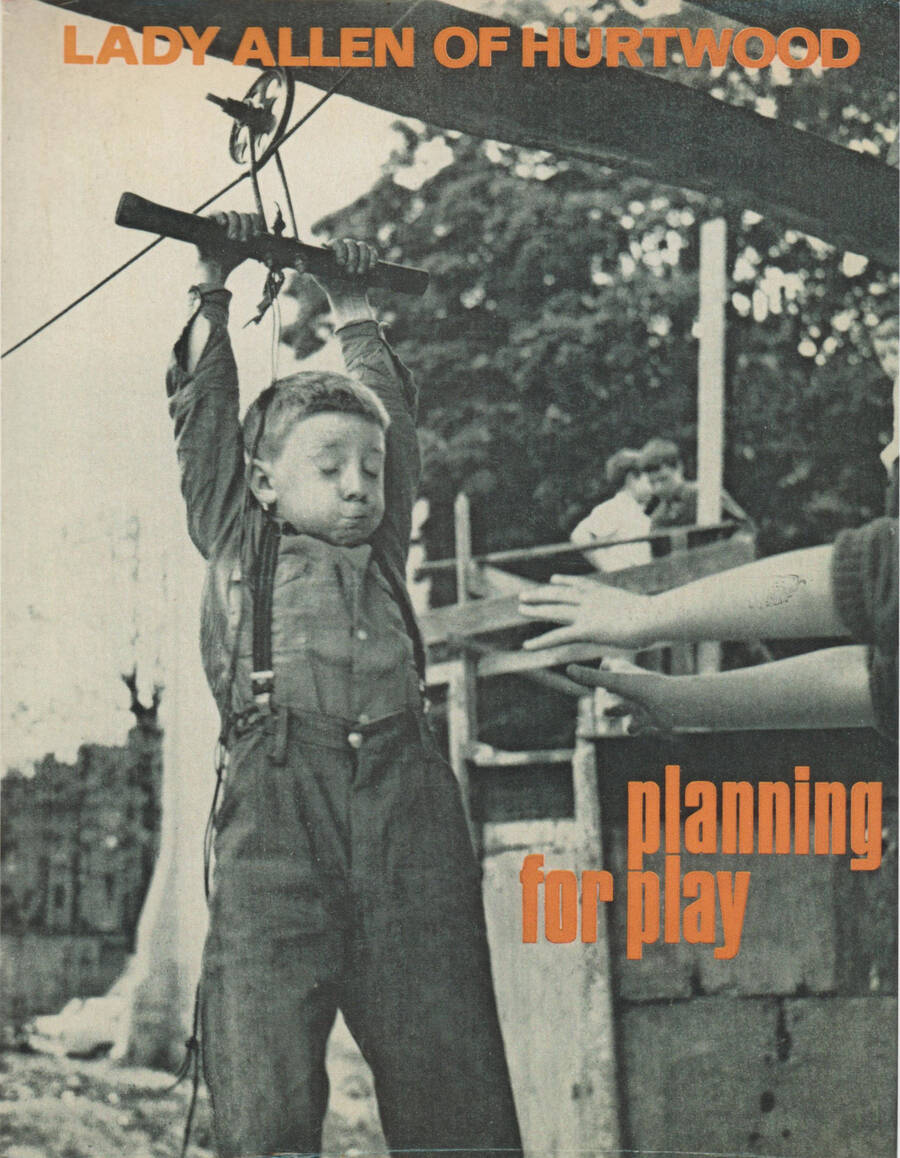Skrammellegepladsen (or junk playgrounds)
In a report Early experience from Emdrup John Bertelsen writes:
“1943
At 10.45 am today the playground opened. The weather was cool and the sky overcast. In spite of this, by 9.30 the children were already pushing at the door to the promised land. Due to a slight misunderstanding i didn't have the key until 10.15 and was unable to open up until fifteen minutes later than planned.
By this time some fifty to seventy-five children, together with a few mothers and grandmothers, had gathered. Grumbling dissatisfaction at the still-locked door increased each minute, as did the number of children, and the situation was beginning to look almost threatening.
Then at last the company's carpenter arrived with the key, the door was opened and the children burst through, completely taking over the playground, appropriating wheelbarrows and everything.
We began by moving all the building material in the open shed. Bricks, boards, firposts and cement pillars were moved to the left alongside the entrance, where building and digging started right away. The work was done by children aged 4 to 17. It went on at full speed and all the workers where at high spirits; dust, sweat, warning shouts and a few scratches all created just the right atmosphere. The children's play- and workground had opened, and they knew how to take full advantage of it.
When i eventually closed the door at 6.15 pm, approximately 900 children had visited the playground.”
This report was dedicated to Lady Allen of Hurtwood.
 Skrammellegeplads (junk playground), Emdrup / Copenhagen, opened in 1943
Skrammellegeplads (junk playground), Emdrup / Copenhagen, opened in 1943
 Planning for Play, Lady Allen of Hurtwood, 1968
Planning for Play, Lady Allen of Hurtwood, 1968
During a research visit to Germany on the verge of the 20th century, Hans Dragehjelm documented a development of playgrounds which seeked for children's growth in the act of free play, notably in sand. In his collected findings (1909) he describes: “Sand, the greatest teacher […], stimulates the playing child with a superabundance of ideas.” (Das Spielen der Kinder im Sande, H. Dragehjlem, p. 18)
Later, in 1943, a new model of playgrounds appears in Emdrup, close to Copenhagen in Denmark, in a big housing complex of buildings wiht about 700 appartments: a skrammellegeplads which translates into something of a junk playground.
Children in urban areas are exposed to these big structures, we call cities, made of buildings, streets, and traffic. One problem children face in such environments is that they are ready-made, mostly of hard industrial materials; concrete, steel, glas, plastic, you name it. Here, children have little to no possibility to shape their own environment.
“Children cannot choose their parents, nor can they choose the place in which they live.
In this sense, adults who create children's living places — architects, designers, and other creators — have an enormous responsibility. It is extremely important for children to have a place to play; it is central to their lives.” (Child's work is play, Mitsuru Senda, The Playgorund Project, p. 7)
The idea behind such a junk playground is to make more-or-less raw materials and tools available to children in order to construct and shape their very own environment; the playground design is literally placed in the hands of children. One of the pioneers of such playgrounds, the landscape architect Carl Theodor Sørensen, describes is as: “There could be branche waste from tree polling and bushes, old cardboard boxes, planks and boards, scrapped cars, old tires, and more.” and he adds “Of course it would look terrible…”
On another line of Early Experience from Emdrup: “Play has something to do with attacking life in an unconventional manner.”